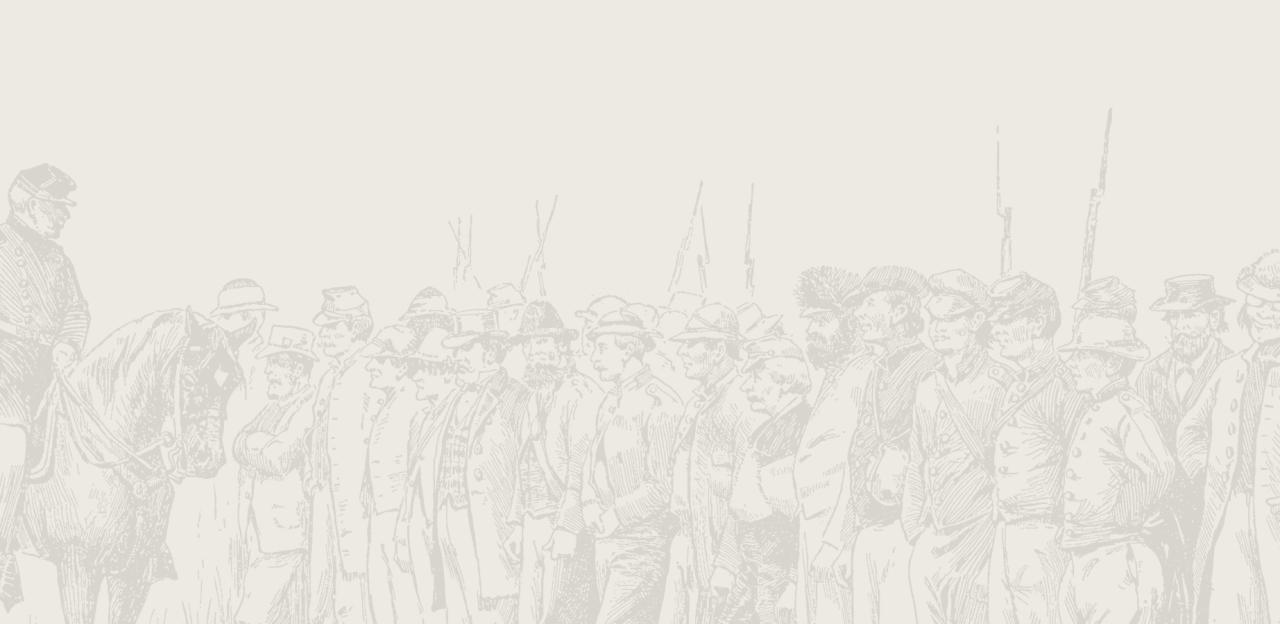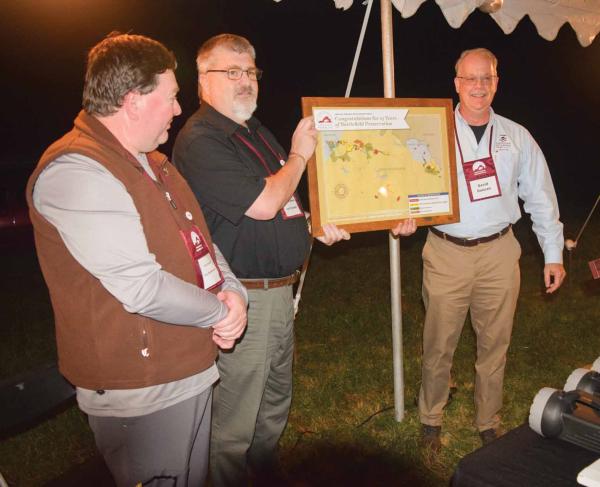The Wilderness

The Battle of The Wilderness
In early May, 1864, the Army of the Potomac and independent IX Corps, now both under Lt. Gen. Ulysses S. Grant and numbering about 120,000 men, left their winter camps in Culpeper County and marched south toward the Rapidan River fords. At dawn on May 4, Union cavalry splashed across Germanna Ford, dispersing Confederate cavalry pickets and enabling Union engineers to construct two pontoon bridges. General Gouverneur K. Warren’s V Corps thumped across the ford and entered the dense, forbidding woodland known as the Wilderness. Grant intended to push the army through the rough terrain into open ground as quickly as possible, yet he would not shy away from attacking Robert E. Lee’s army if the opportunity presented itself.
The following morning, Warren resumed his march. Soon, he received word that Confederate infantry was approaching from the west on the Orange Turnpike. His commander, Maj. Gen. George Meade, ordered Warren to strike the Confederates. The V Corps chief, however, was apprehensive about making an attack in the Wilderness, where dense thickets would make it difficult to maintain a battle line and would nullify the Federals’ numerical superiority. Warren’s protests notwithstanding, his corps advanced astride the turnpike.
While Warren and Meade debated the merits of an attack along the Orange Turnpike, General Richard S. Ewell’s Confederate corps halted on it three miles west of Wilderness Tavern and built strong earthworks on the west edge of Saunders Field. When Warren’s men stepped out of the woods and into the open, Ewell’s troops exacted a fearful toll in casualties. The Yankees achieved a momentary breakthrough, but swift action by Brig. Gen. John B. Gordon’s brigade sealed the breach. The arrival of the Union VI Corps did little more than broaden the front and lengthen the list of casualties.
Shortly after Warren ran into the Confederates on the turnpike, Union Brig. Gen. Samuel Crawford, at the William Chewning farm, observed another enemy column headed east on the Orange Plank Road toward its intersection with the Brock Road. This was a serious threat: if the Confederates gained possession of that area, they could drive a wedge between Warren’s corps on the Turnpike, and Maj. Gen. Winfield S. Hancock’s II Corps, which had passed Warren and moved further south. Meade quickly dispatched Brig. Gen. George W. Getty’s VI Corps division to seize the crossroads. Around 4:00 pm, Getty attacked, his men tearing through the dense thickets in a vicious close-range fight with General A.P. Hill’s corps. Hancock soon arrived and rushed forward to support Getty, continuing the fight until nightfall—and exhaustion—ended the fighting.
Hancock’s Federals resumed the offensive the morning of May 6. A.P. Hill’s tired troops were forced back and the Confederates seemed on the verge of collapse. Brig. Gen. John Gregg’s Texas Brigade from Gen. James Longstreet’s corps arrived in time to stave off disaster. A pair of flank attacks - by Longstreet south of the Plank Road and by Gordon north of the turnpike - helped break the stalemate and forced the Federals behind breastworks. However, just as Longstreet’s men were on the brink of success, Lee’s Old Warhorse was felled by an errant volley from his own troops.
With Longstreet wounded, Lee himself coordinated the final attacks on the Union line along the Brock Road. Hampered by the heavy brush, the Confederates stumbled forward without cohesion until they reached obstructions in front of the Union line. There they were stopped cold by the crashing volleys from Hancock’s veterans. In one spot, Confederate troops dashed forward and planted their flags on the burning works, but their success was short-lived. Within minutes, Union troops counterattacked and reclaimed the works.
On May 7, both sides dug in and awaited attack. Realizing that he could make no further headway in the Wilderness, Grant ordered Meade’s army to pull out after dark and head southeast toward Spotsylvania Court House. He had suffered nearly 18,000 casualties in the Wilderness, almost twice as many as Lee, but his troops were not dispirited. When they discovered that the army was continuing to advance, they cheered their new leader. They had finally found a general determined to lead them to victory.
Test Your Knowledge
Related Battles
12,737
4,595
950
1,000
2,600
1,600
18,399
12,687
731
1,593


